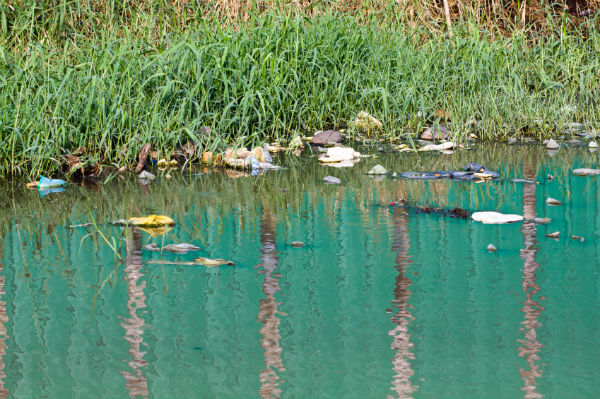
When it was built in the mid-19th century, the shores of the Gowanus Canal — a 1.8-mile-long, 100-foot-wide waterway that runs through the heart of Brooklyn — were home to bustling industries like gas plants, cement factories, oil refineries and chemical plants. Over the past 150 years, many of those plants and factories have closed, but not before leaving behind tons of toxic waste, sewage and trash in the canal’s waters. As a result, the canal is now considered one of the most polluted waterways in the nation.
Over the past few years, trendy Brooklyn neighborhoods have encroached on the once-industrial area, and developers have started drooling to build condos on the canal’s shores. Predictably, a debate has surfaced about how to make the polluted waters palatable for the people being targeted for the new developments: the Whole Foods/crunchy-granola/stroller set. (Believe me, the waters are far from palatable now. Anyone who has ever walked over the Gowanus in summertime knows what I’m talking about; but if you haven’t, think fish plus diapers plus mafia bodies decomposing in a heated oven, and you’ll get the picture.)
So, it’s too bad that it took some slobbering high-rise developers to kick “Project Gowanus Clean Up” into gear (as there have been people living near the canal for decades), but I guess money does talk. Whatever the motivation, it’s certainly good that the idea of cleaning up the canal is getting traction.
The only problem is that — again, predictably — no one can agree on who’s going to
pay for this massive clean-up effort. The most recent, and probably most controversial, idea that has been floated is to seek funding from the federal Superfund program, which is an effort run by the EPA to investigate and clean up the country’s most hazardous waste sites. You may wonder how a solid, well-funded commitment to clean up a hazardous waterway that’s practically in your backyard could be controversial. Frankly, I wonder as well. It seems to me, and other supporters of the plan, that making the canal a Superfund site would be a good way to go. It would formally recognize what everyone already knows — that the canal is disgusting and needs to be overhauled — and would then do something about it by seeking compensation from the companies that polluted the waterways in the first place.
So, why are people against the plan? Again, it comes down to the bottom line. A Superfund designation would mean different rules for construction and use of the site until it’s cleaned up, which, by all accounts, could take many years. That means developers probably couldn’t build their high rises yet and some of the activities people have come to enjoy on the canal (yes, apparently some people enjoy boating and kayaking on the canal) might have to be suspended. Meanwhile, property owners are afraid of the stigma a Superfund designation would carry, which they say could lower their property values in the short term, and others argue that the Superfund plan would simply take too long.
And fair enough. Yes, federal programs can be fraught with inefficiencies and red tape, and all those economic concerns are valid. But you know what
I’m most concerned about? Not living a few miles from a veritable toxic waste dump. It seems to me that taking concrete steps to clean up the canal once and for all, even if it means some setbacks in the short term, can only be a good thing.


